The Ernst Plank company
was seated in the Hochfederstrasse 40 in the German
toy town of Nuremberg. In 1866 it was enrolled in the Commercial Register of
Nuremberg as 'Ernst Plank, Fabrik Optischer und Mechanischer Waren'.
 All the lanterns from Plank are supplied with its
trade mark, with the initials 'E.P.'. Sometimes this mark was simply pressed
in the tin, mostly a roundel was fixed to the lantern by means of two small
clips. Additionally the labels always show his well
known mark, the winged wheel with the capitals 'E.P.'. By this Plank's lanterns
are always easy to recognize. All the lanterns from Plank are supplied with its
trade mark, with the initials 'E.P.'. Sometimes this mark was simply pressed
in the tin, mostly a roundel was fixed to the lantern by means of two small
clips. Additionally the labels always show his well
known mark, the winged wheel with the capitals 'E.P.'. By this Plank's lanterns
are always easy to recognize.Besides magic lanterns the firm also made all kinds of tin toy steamboats and train sets. |
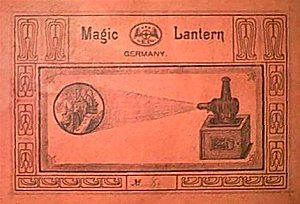
There are some variations of this label with different ornaments. 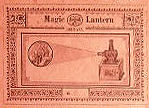
 |
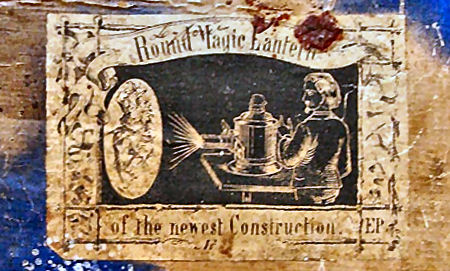 |
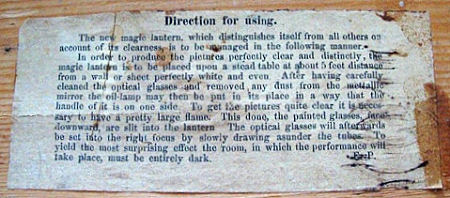 One of the earliest labels on a wooden box with a 'Round Magic Lantern' made by Ernst Plank. The trade mark 'EP' is on the label. On the inside of the box a paper with the direction for using. |
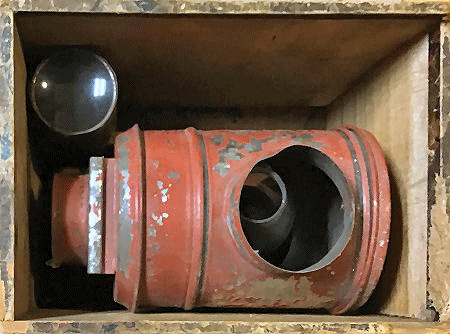 |
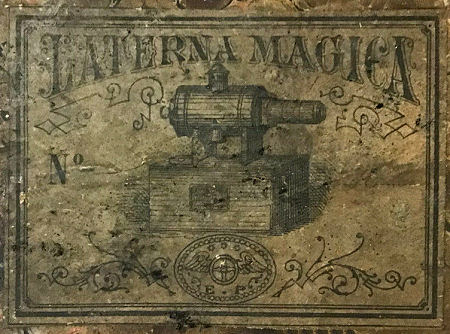 |
|
Another very old E.P. label stuck to
the wooden box that contained a round, barrel-shaped magic lantern. |
|
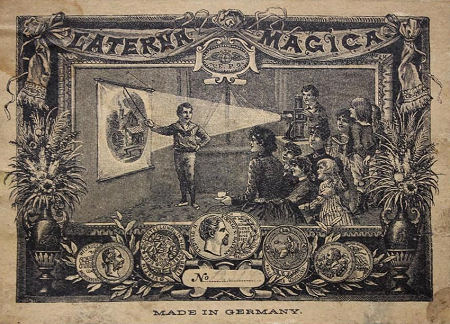 Black and white version of the kind of colourful labels shown below. |
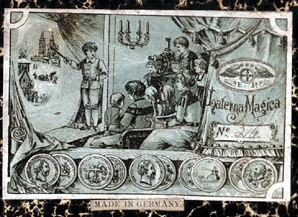 |
| This
label was found on the box of an EP lantern from 1890. Many of the features that
recur with regularity on an EP-label are present here: the trade mark, the magic
lantern show, the golden medals, the mother with her child on her
lap. Also the boy with the pointer, standing in front of the screen, and the
other boy operating the magic lantern, are to be seen on many labels. |
|
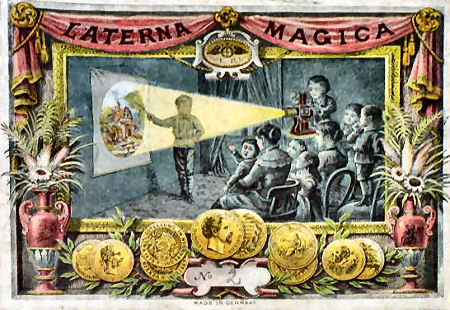 |
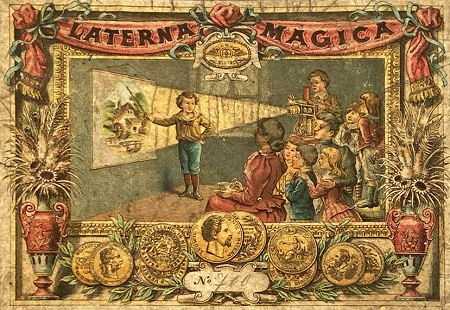 |
| Apparently Ernst
Plank was proud of the many awards his firm received. The golden medals
attract attention on almost al his labels. In a trade list from 1903 the
following prizes are mentioned: 1868 Amsterdam, Medal from William III, King of the Netherlands and patron of
the exhibition at the ' Paleis van Volksvlijt'; 1873 Vienna, Medal from Franz Joseph I,
Emperor of Austria; 1876 Philadelphia, golden medal at the World's Fair. |
1879 Nuremberg, Golden
medal 'Ausstellung Deutsche Blecharbeiter Verein'; 1882 Munich, Ludwig Medal from the Bayrische Ausstellung für
Kunstübung. The above label is known in several different versions. Obviously it was regularly adjusted to the latest coiffures and fashion. Find the ten(?) differences! |
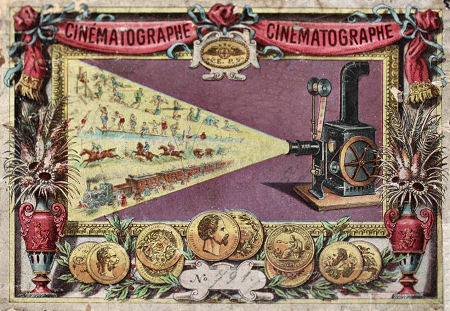 |
The frame of this label is similar to the frame of the preceding labels. The
picture within this frame represents a cinematograph. Around 1900 the
sale of the magic lanterns receded dramatically because of the fierce
competition of the moving picture. To meet this rivalry the manufacturers
supplied their magic lanterns with an accessory that made it possible to
project not only slides, but also films. E.P. used these labels on the packaging of the cinematographs they produced. |
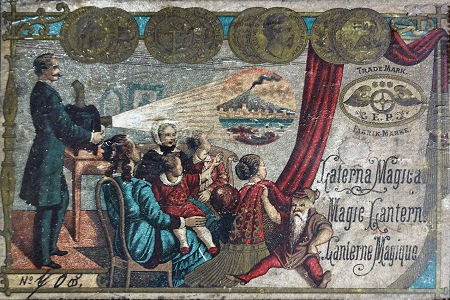 |
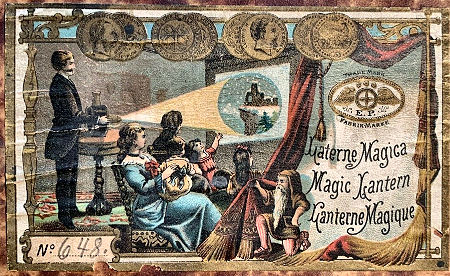 |
|
This
label shows only four of the awards. The medal from king William III is missing. |
|
 |
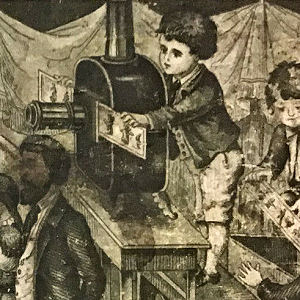 This label was found on a wooden box that contained an Ernst Plank magic lantern. The label contains no trade marks. |
|
|
Probably the young man behind the magic lantern gives a presentation of the
story 'The Monkey displaying the Magic Lantern'. |
||
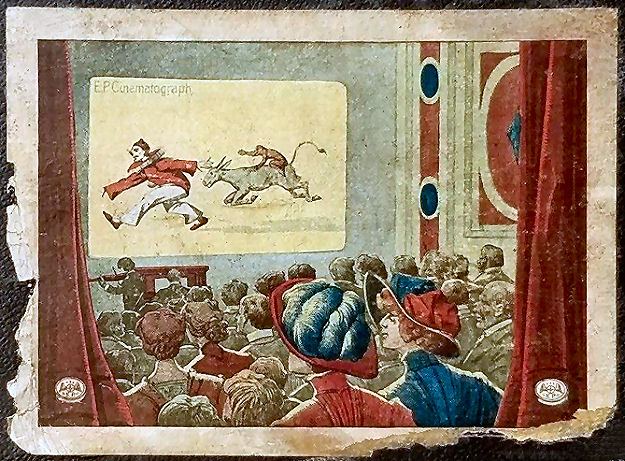 |
Another label that was very rarely found on a Ernst Plank box.
This box contained an E.P. Cinematograph. The label below was stuck on the inside of the lid: 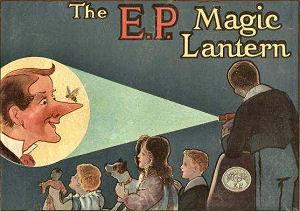 |
|
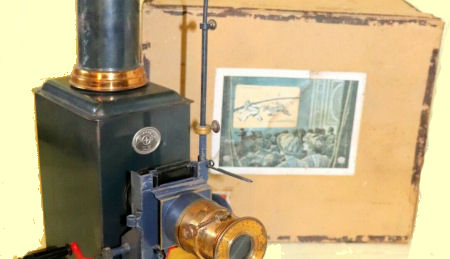 A similar label is stuck on the lid of a cardboard box that contains an E.P. cinematograph 791P. Size box approx 33.5 x 28 x 16.5 cm. |
 |
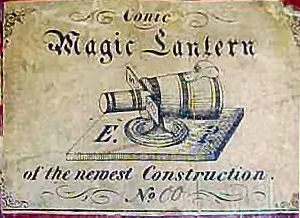 |
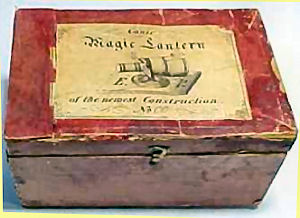 |
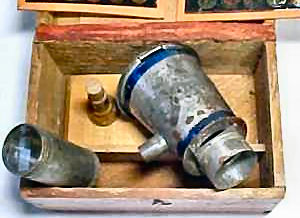 |
|
Though the
initials E.P. are obviously present on this label, it is questionable
whether Ernst Plank was indeed the manufacturer. The well known trade mark
with the winged wheel is absent on the label as well as the accompanying
lantern. The conic magic lantern is very rare and was probably made, in
spite of the English text, in Germany around 1850. |
||
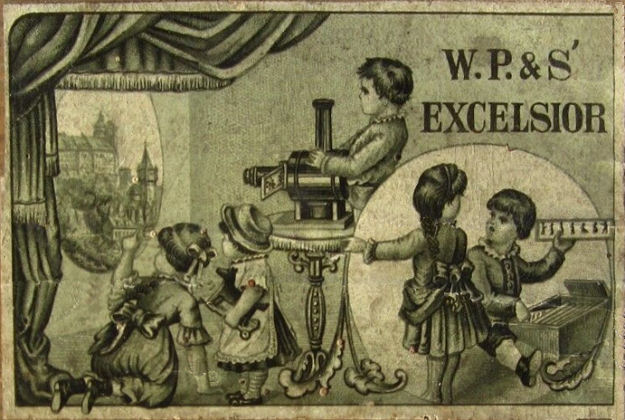 |
Label found on the lid of a wooden box containing a
barrel-shaped toy magic lantern and instructions for use with the mark of
E.P.
|
|
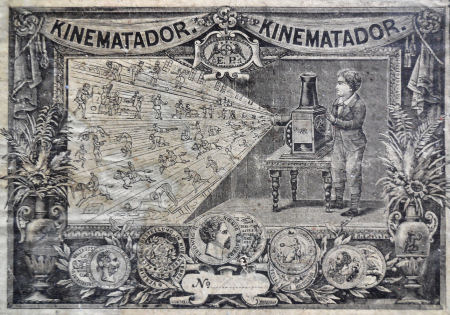 This label is specially made for the Kinematador, a magic lantern with which not only the ordinary magic lantern slides could be displayed, but also special round discs of celluloid. |
 |
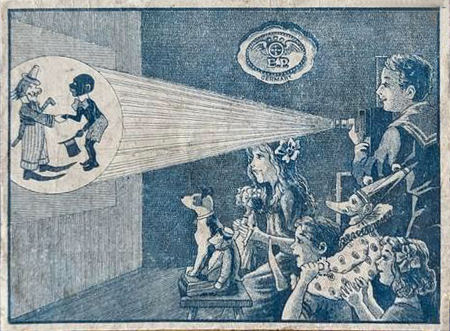 |
A rare EP label in blue. |
|
More colourful labels...........
|
|
|
|
|
|
|
©1997-2025
'de Luikerwaal' All rights reserved. Last update: 15-02-2025. |
|
